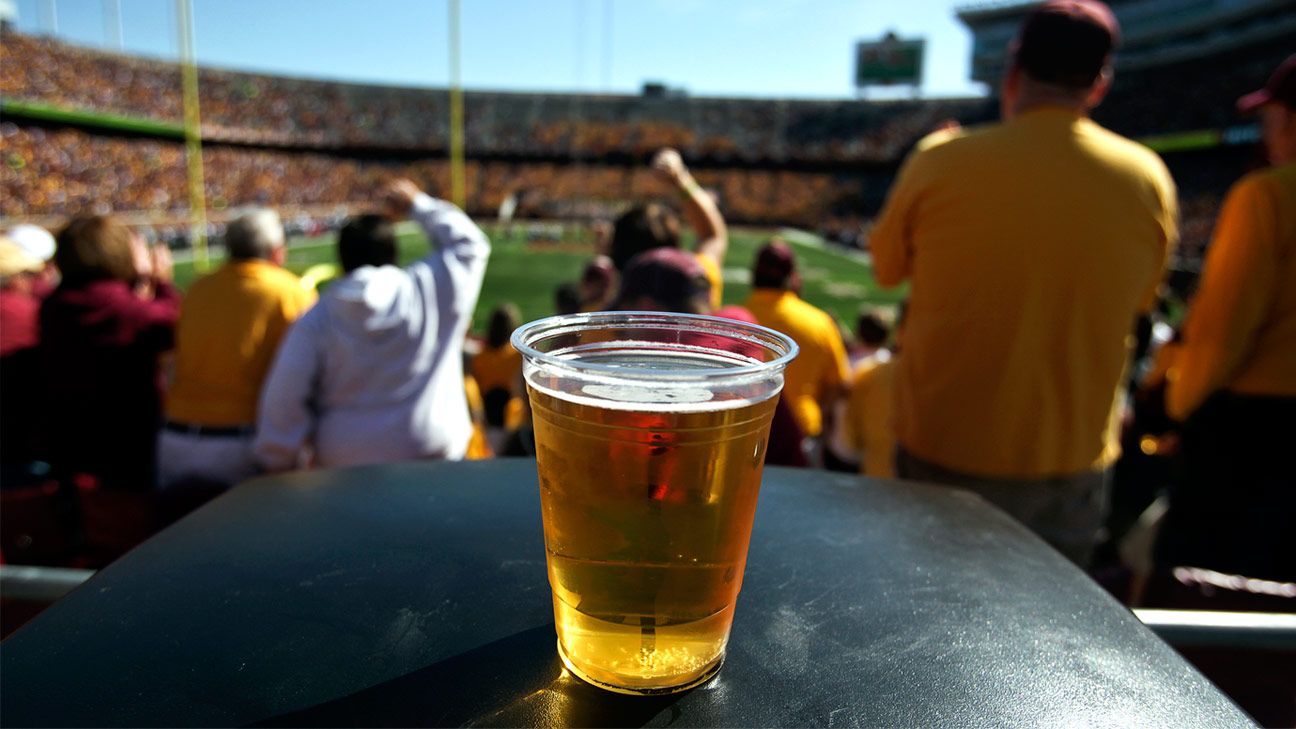For many years, the booze flowed only outside of stadiums. Not anymore: Selling beer and wine inside college football stadiums has become the norm over the past decade, a way for schools to bring in more revenue and attract fans who might otherwise be inclined to stay home.
According to a survey by The Associated Press of Power 5 conference schools and Notre Dame, 55 of 69 of them — 80% — now sell alcohol in the public areas of their stadiums on game days. Of the remaining schools, some sell alcoholic drinks in nonpublic areas of the venue such as suites; others do not sell booze at all.
The University of Wisconsin is one of the institutions that do not sell alcohol to the general public at football games, but it will begin selling booze at basketball and hockey games this season.
“If our fan experience metrics increase, then it certainly warrants a conversation,” said Mitchell Pinta, Wisconsin’s deputy athletic director. “‘Hey, we did this at Kohl Center (and) LaBahn Arena. What would it take? What will it look like? Is that something we want to do at Camp Randall?'”
The number of schools willing to sell alcohol in football stadiums picked up dramatically in the late 2010s.
“Since the SEC made that decision, other Power 5 conferences followed suit, and we’ve seen an exponential rise,” said Adam Barry, a health behavioral social scientist at Texas A&M .
The AP survey found that 19 schools that currently are in Power 5 conferences began selling alcohol to the public during football games in 2019. Before that, just 20 such schools permitted the practice.
Since 2019, another 16 schools have come on board, including Michigan State, Kentucky and Stanford, all of which started selling booze in their football stadiums during the current season.
Michigan Gov. Gretchen Whitmer signed legislation in July lifting the state’s ban on alcohol being sold at college sporting events. Michigan State made moves relatively quickly in response.
“I didn’t have much trepidation because we’re not the first,” said Marlon Lynch, Michigan State’s chief safety officer. “It’s been done for years.”
The University of Michigan, meanwhile, did not make alcohol available at the Big House this fall, waiting to see how it goes at basketball and hockey games later this winter. The school has also conducted community surveys.
“We have to take slow steps in order to implement this, because it hasn’t been a part of our culture,” athletic director Warde Manuel said. “This is a way to phase that in, see what the data says and then talk to the regents and the president again.”
University of Michigan Regent Paul Brown said he was not sure about the idea.
“One of the things that makes us unique is a collegiate atmosphere,” Brown said last month as the board approved applying for liquor licenses at the school’s football, basketball and hockey venues. “It is different than the pro sports that always serve alcohol. I think that difference is one thing that creates value for our institution. And so, I don’t want to destroy that value.”
The University of North Carolina, meanwhile, is in its fifth season of selling alcohol, which has helped the bottom line with about $4 million in sales. After having $320,213 in net sales during the 2019-20 athletic year, the school quadrupled that number last year and will see an increase again after this season.
“Athletic departments typically are not profitable,” Barry said. “So, selling alcohol has simply become a new revenue stream.”
Information from The Associated Press contributed to this report.
